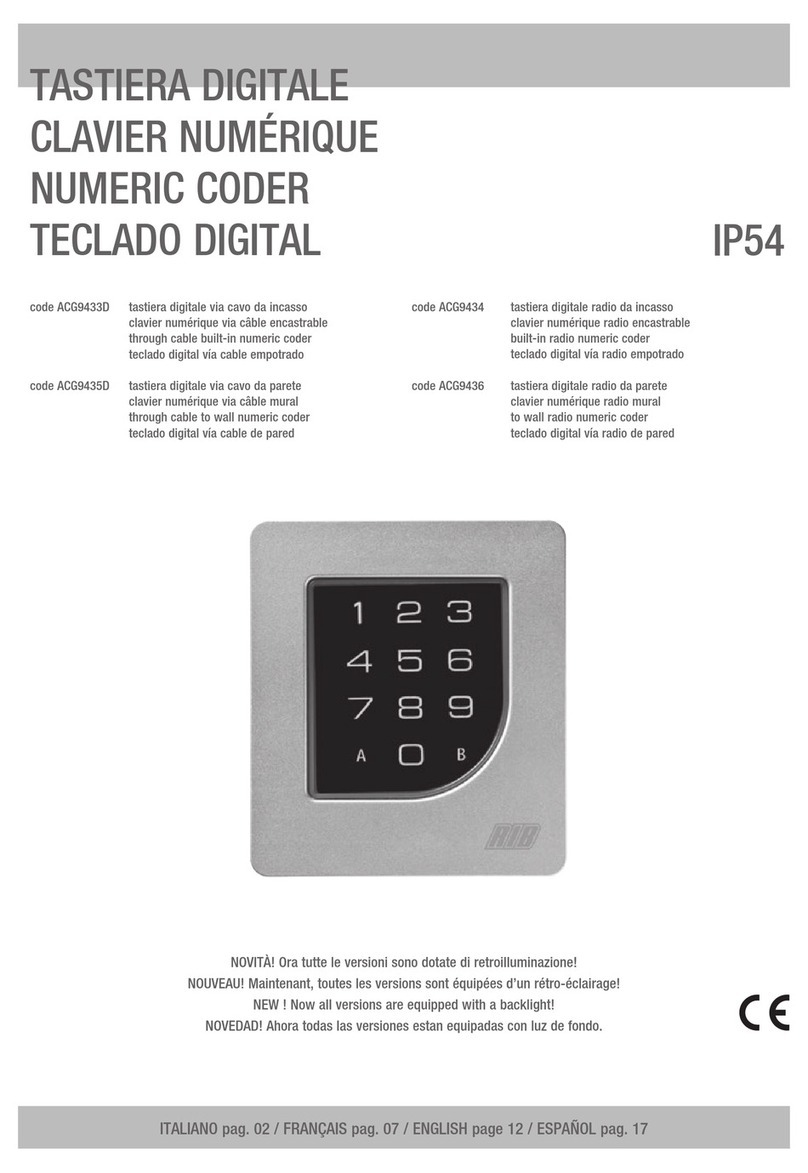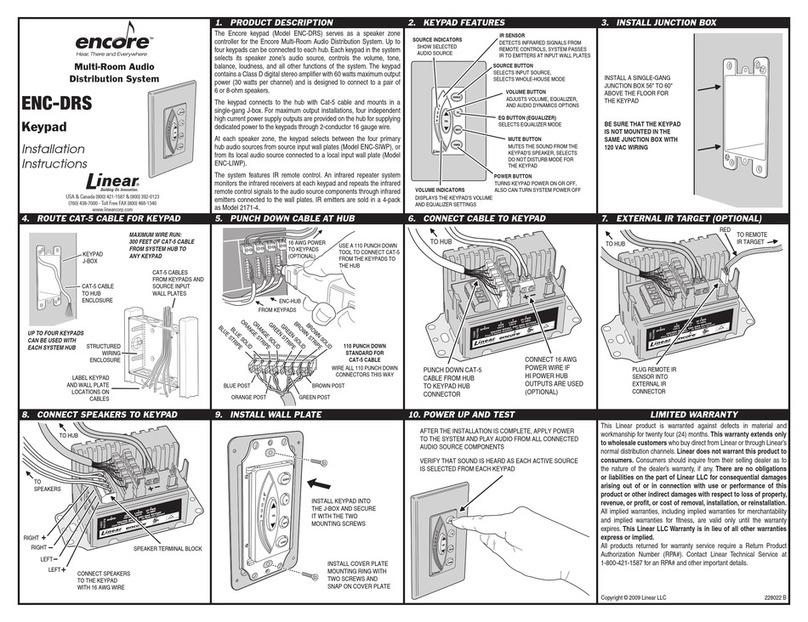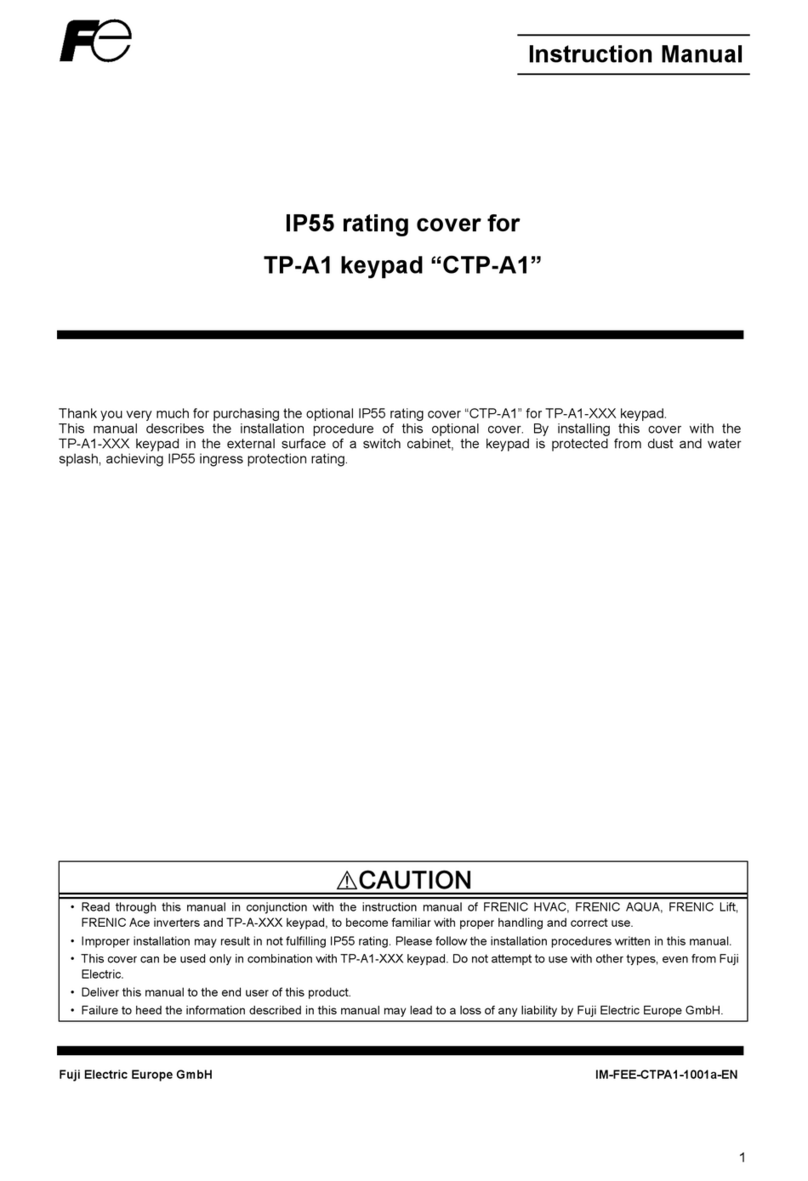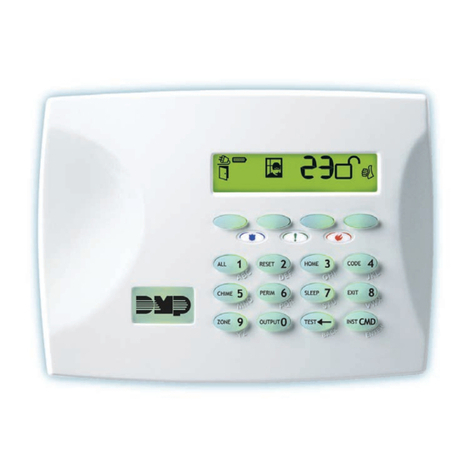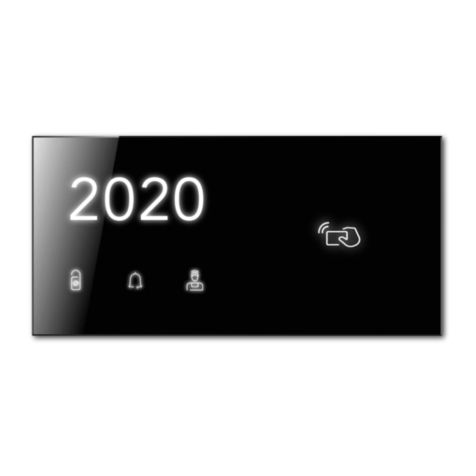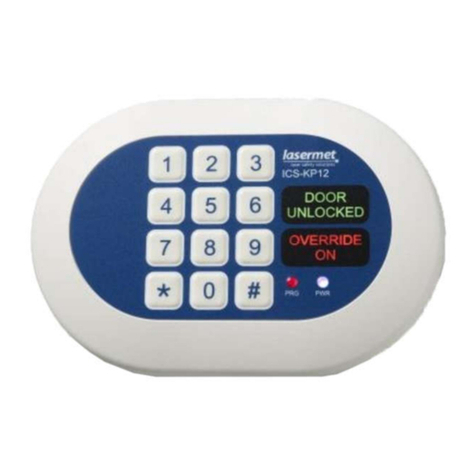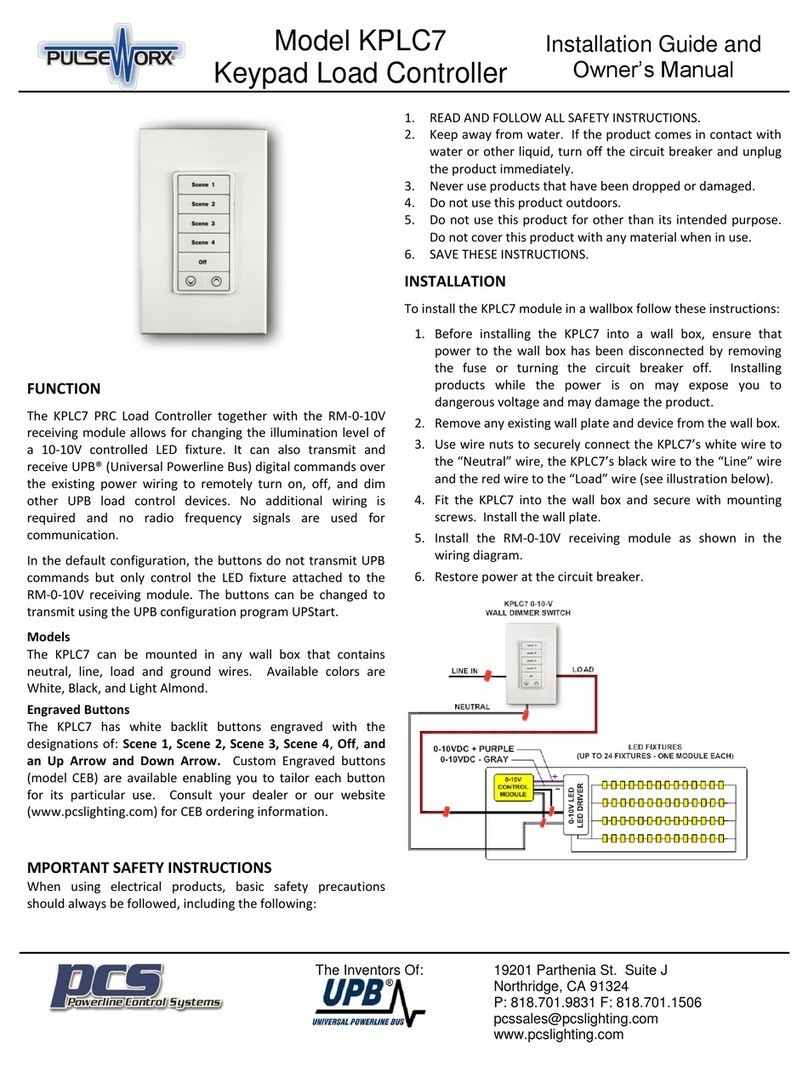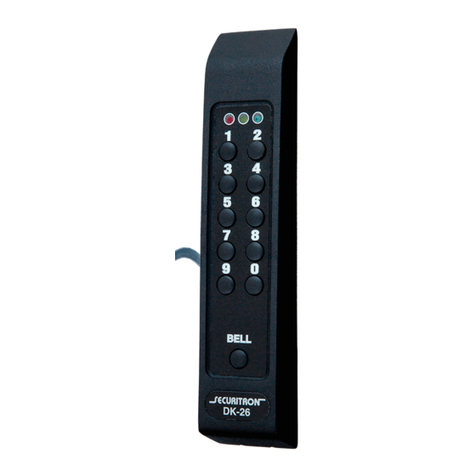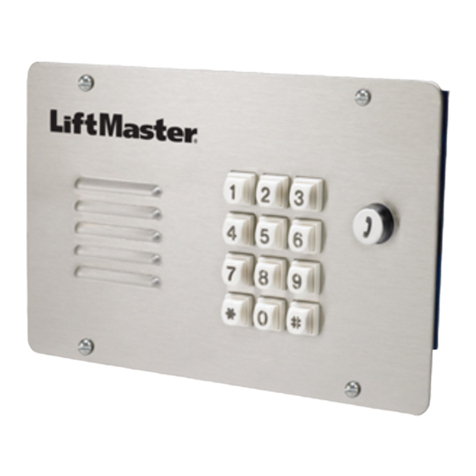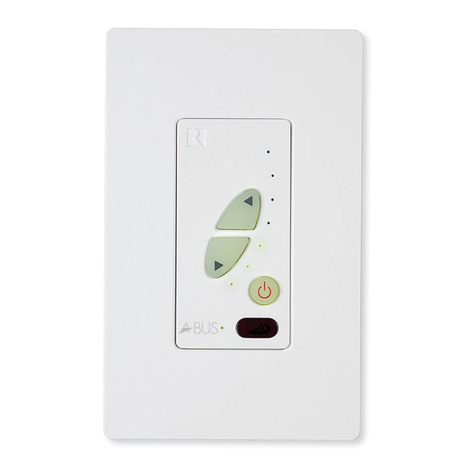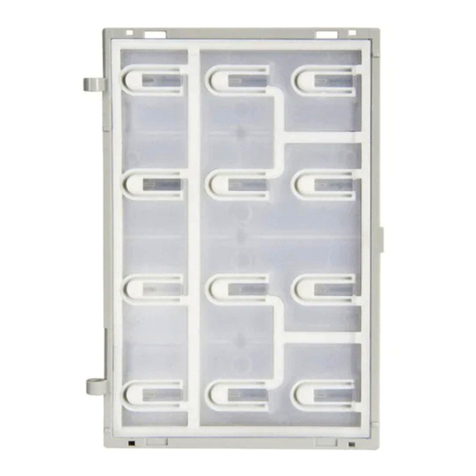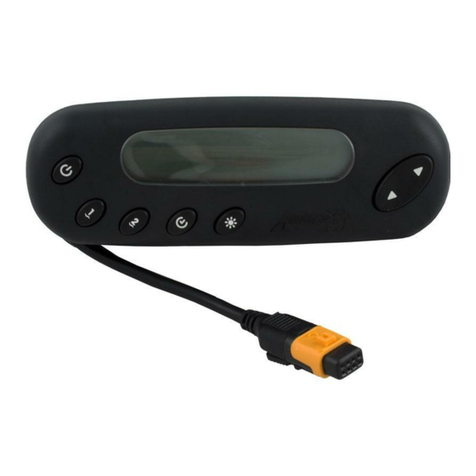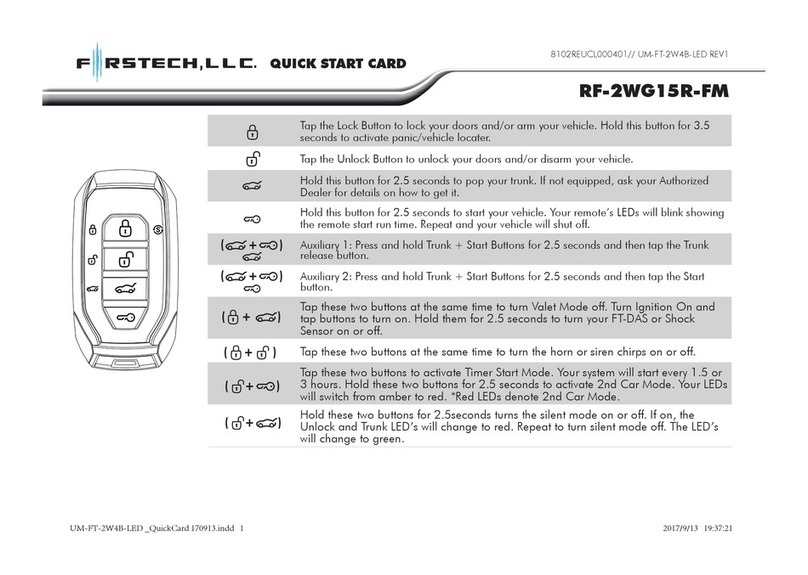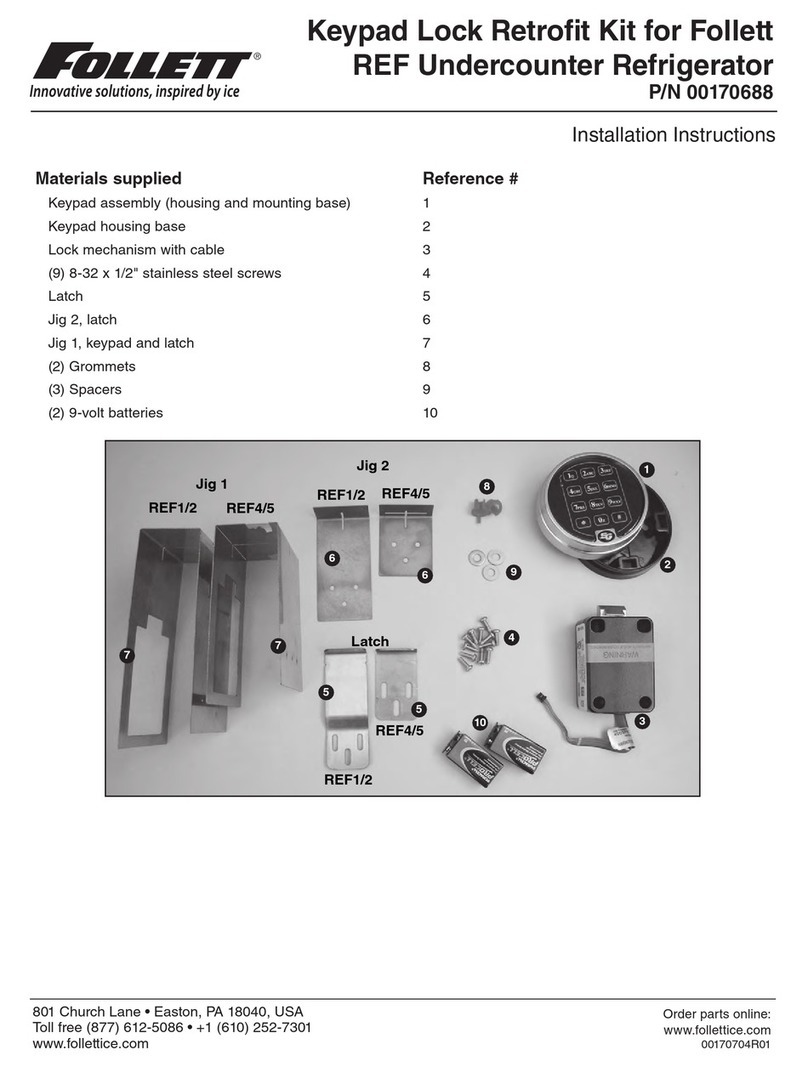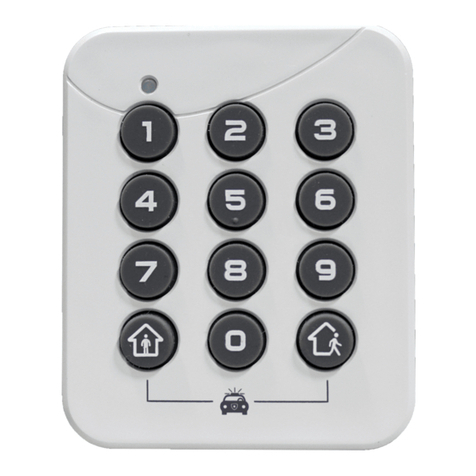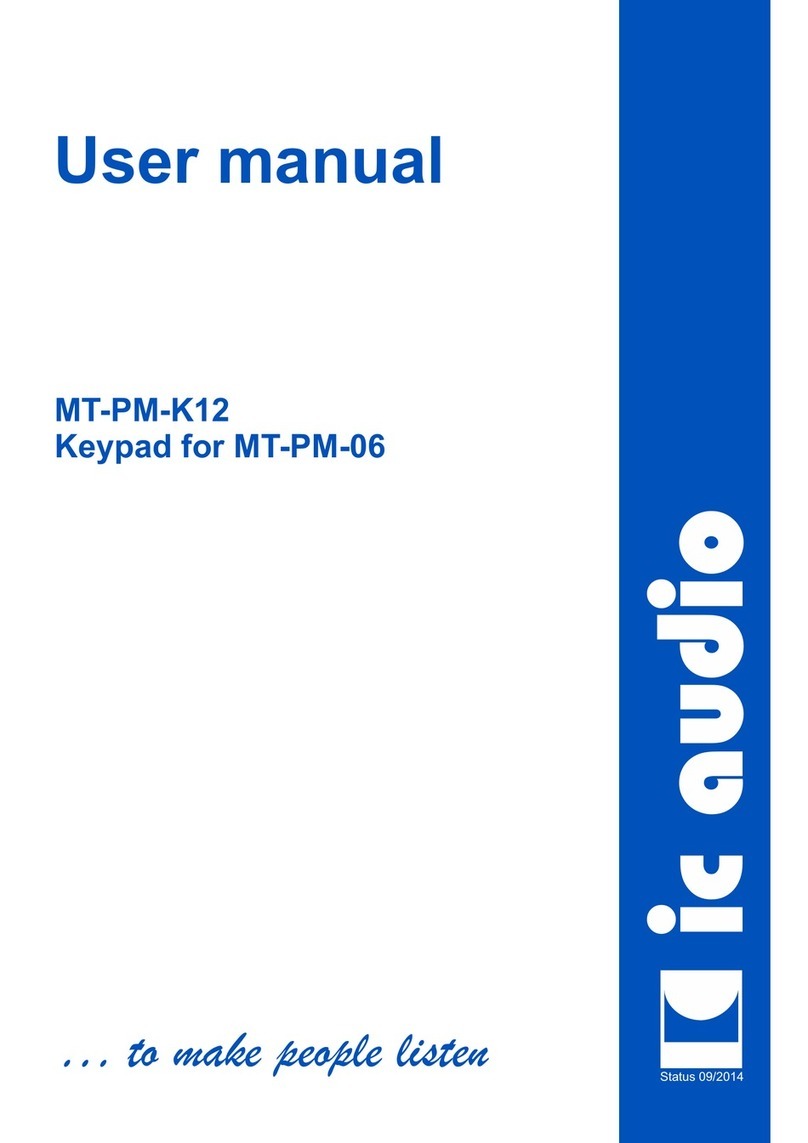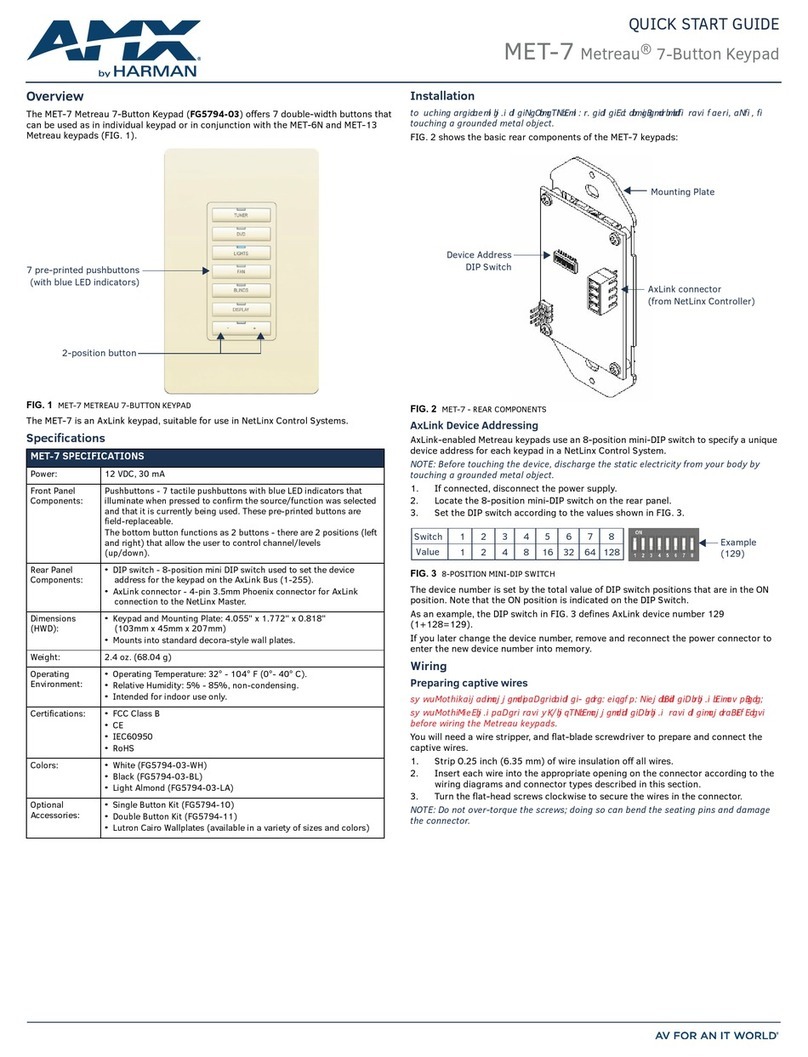Crestron Electronics Zum Wireless Keypad User manual

ZUMMESH-KP10A/ZUMMESH-KP10B
Zūm™ Wireless Keypad
Installation Guide
Description
The Crestron®ZUMMESH-KPA and ZUMMESH-KP10B are ac-powered Zūm wireless
wall-box keypads. Congured with either a rocker switch or a four-button layout, the
keypads are a versatile and easy-to-use addition to the Zūm commercial lighting system.
Powered via line-voltage ac power, the keypad’s streamlined design and out-of-the-box
functionality is advantageous in new or retrot installations.
The ZUMMESH-KP10A and ZUMMESH-KP10B are functionally identical. For simplicity
in this guide, the term ZUMMESH-KP is used.
A basic single-room Zūm system consists of Zūm mesh devices, i.e., dimmers, switches,
keypads, and sensors. The Zūm mesh devices in the room communicate directly with
each other without the need for a centralized gateway or processor.
To monitor or control the room from a centralized Crestron control system, use the
ZUMMESH-NETBRIDGE.
NOTE: The ZUMMESH-NETBRIDGE requires a J-box device to provide power.
For quick network setup, use the Zūm app on a smartphone or tablet for setup.
Additional Resources
Visit the product page on the Crestron website (www.crestron.com)
for additional information. Use a QR reader application on your
mobile device to scan the QR image.
Installation
WARNING: Turn off the power at the circuit breaker. Installing with power on can
result in serious personal injury and damage to the device.
To install the ZUMMESH-KP10, do the following:
1. Turn the power off at the circuit breaker.
2. Wire the device as shown in the following diagram.
Important Notes
WARNING: To avoid re, shock, or death, turn off the power at the circuit breaker or
fuse and test that the power is off before wiring!
NOTES: Observe the following points.
• Neutral: The ZUMMESH-KP10 requires a neutral connection to operate.
• Codes: Install in accordance with all local and national electrical codes.
• Installation: A qualied electrician should install this product .
• Wiring: Use copper wire only. For supply connections, use wire rated for at least
75 °C.
• Temperature: For use where temperatures are between 32° to 104 °F (0° to 40 °C).
• Electrical Boxes: Devices mount in standard electrical boxes. For easy installation,
Crestron recommends using 3-1/2 in (89 mm) deep electrical boxes. Several
devices can be installed in one electrical box (multigang). For a smooth
appearance, one-piece multigang faceplates (not supplied) can be installed.
• Switches: Mechanical 3- or 4-way switches do not work with the ZUMMESH-KP10.
• Spacing: If mounting one device above another, leave at least 4-1/2 in (115 mm)
vertical space between them.
3. Push all power wires back into the electrical box and fasten the device to the
electrical box with the provided screws.
4. Attach the decorative faceplate.
5. Restore the power at the circuit breaker.
Multigang Installations
In multigang installations, several devices are grouped horizontally in one electrical box.
For a smooth appearance, install a one-piece multigang faceplate (not supplied).
NOTE: When installing into a multigang box, do not fully tighten devices to the box
until the faceplate has been aligned.
NOTE: Devices do not mount within a 2-gang mud ring. Use a standard 2-gang box.
Press to set lights
to 90% (scene 1).
Press and hold to
raise the lights.
Press to turn the
lights off. Press and
hold to lower the
lights.
Operation
The ZUMMESH-KP10A or ZUMMESH-KP10B functions as described below.
ZUMMESH-KP10A Operation
ON
SCENE 2
SCENE 3
OFF
Set loads to 90%. Press and hold to raise lights.
Turns loads off. Press and hold to lower lights.
Set loads to 50%. Press and hold 5 seconds to save preset.
Set loads to 10%. Press and hold 5 seconds to save preset.
ZUMMESH-KP10B Operation
Neutral (white)
Hot (black)
Ground (bare or green)
100-277 Vac power
from breaker
Basic Room Setup
A basic single-room Zūm system consists of Zūm mesh devices, i.e., dimmers, switches,
keypads, and sensors. The Zūm mesh devices in the room communicate directly with
each other without the need for a centralized gateway or processor.
To set up a new single-room Zūm system, do the following:
Step 1a: Create a new single-room Zūm system.
Step 2: Add Zūm mesh devices to the room.
Step 3: Finish creating the single-room Zūm system.
To modify an existing Zūm system, do the following:
Step 1b: Place the system in Joining mode.
Step 2: Add Zūm mesh devices to the room.
Step 3: Finish creating the single-room Zūm system.
Step 1a – Creating a Single-Room Zūm System
To create a new single-room Zūm system, rst form a new room.
NOTE: This can be performed on only one device in the room.
NOTE: The device that is used to create the room is automatically added to the room.
The device does not need to be added to the room.
NOTE: A room can be created only from an ac-powered device.
Start a New Single-Room System with a Keypad, Dimmer, or Switch
Press the bottom button 5 times, and then press and hold the bottom button for
2 seconds. If the device is not factory fresh, hold the button for 10 seconds. Release the
button when the LED lights. The LED illuminates for 3 seconds and then slowly ashes to
indicate that the room is in Joining mode and that other devices can join the room.
Start a Single-Room System with a J-Box Device
Press the SETUP button 5 times, and then press and hold the SETUP button for
2 seconds. If the device is not factory fresh, hold the button for 10 seconds. Release the
button when the LED lights. The LED illuminates for 3 seconds and then slowly ashes to
indicate that the room is in Joining mode and that other devices can join the room.
2s or 10s
TEST
SETUP
2s or 10s
SPECIFICATION DETAILS
Power Requirements 100-277 Vac, 50/60 Hz, line power
Enclosure 1-gang mountable in a 3-1/2 in deep electrical
box;
Requires decorator-style faceplate (sold
separately)
Environmental
Temperature 32° to 104 °F (0° to 40 °C)
Humidity 10% to 90% RH (noncondensing)
Dimensions
Height 4.125 in (105 mm)
Width 1.75 in (45 mm)
Depth 1.8 in (46 mm)
Weight 5 oz (142 g)

5s
10s
5s
Creating Scenes
Setting the scenes alters the default presets to allow customization of the brightness
levels when a button is pressed. Set scenes using the End-User Method, Manual
Method, or the Remote Method.
NOTE: Only load controllers bound to this keypad can be in the keypad’s scenes.
NOTE: All load controllers bound to this keypad must be in this keypad’s scenes.
End-User Method
The end-user method allows fast and efcient setting of the presets. The end-user
method is only applicable to SCENE 2 and SCENE 3. It cannot be used on 2-button
keypads, and cannot be used to save the ON (scene 1 preset) scene.
To customize presets, do the following:
1. Go to each load controller that is bound to the keypad and set the loads to the
desired brightness level for the scene.
2. Hold the SCENE 2 or SCENE 3 button for 5 seconds to save the current light levels
to the pressed button.
Manual Method
Use the Manual Method when each load controller is physically accessible.
To customize presets, do the following:
1. Using the keypad in the room, hold the top and bottom buttons simultaneously for
5 seconds, the LED ashes. Then press the top button 2 times, then the bottom
button 1 time.
• The keypad blinks its LED 2 times every 2 seconds.
• Load controllers that are linked with the keypad fast blink their LED.
2. Adjust the load levels.
• Using the dimmers, adjust all load levels in the room by pressing and holding the
top button to raise the light level or the bottom button to lower the level.
• Using the switches, turn the loads on or off by pressing the top button to turn
the load on or the bottom button to turn the load off.
• Using the J-box load controllers, press and hold the TEST button on the J-box
device to cycle-dim the load.
3. Using the keypad in the room, press the ON, SCENE 2, or SCENE 3 button that
should recall the current levels. This saves the levels to the scene.
4. Repeat steps 2 and 3 for all scenes.
5. Tap the bottom button on the keypad 3 times to exit scene setting.
ON
SCENE 2
SCENE 3
OFF
Factory Reset
Perform a factory reset when the device is removed from the network or to remove any
conguration settings. The device must also be factory reset if the device is being moved
to a different system.
NOTE: New-in-box devices do not need to be factory reset before joining a system.
To factory reset a dimmer or switch, press and hold the top and bottom buttons for
5 seconds until the LED lights, and then release both buttons. Then, press and hold the
bottom button for 10 seconds until the LED lights.
Step 2 - Adding Zūm Mesh Devices to the Room
Adding Zūm mesh devices to a room is quick and easy. Add devices to the room when
the room is in Joining mode. Joining mode is automatically enabled after a single-room
Zūm system is started (see Step 1a). Joining mode can also be enabled manually (see
Step 1b).
The LEDs on all ac-powered devices in the system blink when the system is in Joining
mode.
NOTE: A Zūm mesh device can belong to only one room.
NOTE: The Zūm mesh device used to create the room is already part of the network. It
does not need to be added to the network.
To add a keypad to the room, press the top button 3 times, and then press and hold the
top button for 2 seconds. If the device is not factory fresh, hold the button for
10 seconds. Release the button when the LED lights. The LED blinks slowly to indicate
that it is part of the room and that the room is still in Joining Mode.
2s or 10s
Step 3 - Finishing the Single-Room Zūm System
Press any button on a device that has already joined the network to end the setup
process (e.g., the top button of a keypad or the SETUP button of a J-box device that is
blinking its LED).
TEST
SETUP
5s
Remote Method
Use the Remote Method when load controllers are not physically accessible.
To customize presets, do the following:
1. Using the keypad in the room, hold the top and bottom buttons simultaneously for
5 seconds, the LED ashes. Then press the top button 2 times, and then the
bottom button 1 time.
3. Hold the bottom button for 3 seconds until one of the loads in the room begins to
ash. The load that is ashing is the "Selected" load.
4. Tap the bottom button to cycle through the loads until the desired load ashes. The
load ashes twice and then returns to its previous light level to indicate that it is
selected.
5. Adjust the brightness by holding the top button on the keypad to raise the light
level or holding the bottom button to lower the light level.
6. To save the light level to a scene, press the ON, SCENE 2, or SCENE 3 button.
7. Press the bottom button to select the next load controller that is bound to this
keypad. The load ashes twice and then returns to its previous light level to
indicate that it is selected.
8. Repeat steps 4 through 6 for additional load controllers until all load controllers and
all scenes are dened.
9. Tap the bottom button 3 times to exit.
Step 1b – Expanding an Existing Single-Room Zūm System
To allow other devices to join the room, place the single-room Zūm system into Joining
mode. Joining mode can be enabled from any ac-powered device or battery keypad that
is already part of the room.
Expand a Single-Room Zūm System Using a Keypad
To enter Joining mode, press and hold both the top and bottom buttons for 5 seconds,
wait for the LED to light, and then tap the top button once, and then the bottom button
once.
Pressing any button on a device that is part of the network takes the system out of
joining mode. Joining mode ends automatically after 4 minutes.
Expand a Single-Room Zūm System Using a J-box Device
To enter Joining mode, tap the SETUP button 2 times, and then tap the TEST button.
TEST
SETUP
TEST
SETUP
5s
This product is Listed to applicable UL®Standards and requirements tested by Underwriters
Laboratories Inc.
Ce produit est homologué selon les normes et les exigences UL applicables par Underwriters
Laboratories Inc.
Federal Communications Commission (FCC) Compliance Statement
This device complies with part 15 of the FCC Rules. Operation is subject to the following two
conditions: (1) This device may not cause harmful interference, and (2) this device must accept any
interference received, including interference that may cause undesired operation.
CAUTION: Changes or modications not expressly approved by the manufacturer responsible for
compliance could void the user’s authority to operate the equipment.
NOTE: This equipment has been tested and found to comply with the limits for a Class A digital
device, pursuant to part 15 of the FCC Rules. These limits are designed to provide reasonable
Crestron Electronics, Inc. Installation Guide - DOC. 7956A
15 Volvo Drive Rockleigh, NJ 07647 (2047775)
Tel: 888.CRESTRON 02.17
Fax: 201.767.7576 Specications subject to
www.crestron.com change without notice.
protection against harmful interference when the equipment is operated in a commercial environment.
This equipment generates, uses, and can radiate radio frequency energy and, if not installed and used
in accordance with the instruction manual, may cause harmful interference to radio communications.
Operation of this equipment in a residential area is likely to cause harmful interference in which case the
user will be required to correct the interference at his own expense.
Industry Canada (IC) Compliance Statement
CAN ICES-3(A)/NMB-3(A)
The product warranty can be found at www.crestron.com/warranty.
The specic patents that cover Crestron products are listed at patents.crestron.com.
Certain Crestron products contain open source software. For specic information, please visit
www.crestron.com/opensource.
Crestron, the Crestron logo, and Zūm are either trademarks or registered trademarks of Crestron
Electronics, Inc. in the United States and/or other countries. UL and the UL logo are either trademarks
or registered trademarks of Underwriters Laboratories, Inc. in the United States and/or other countries.
Other trademarks, registered trademarks, and trade names may be used in this document to refer to
either the entities claiming the marks and names or their products. Crestron disclaims any proprietary
interest in the marks and names of others. Crestron is not responsible for errors in typography or
photography.
This document was written by the Technical Publications department at Crestron.
©2017 Crestron Electronics, Inc.
This manual suits for next models
2
